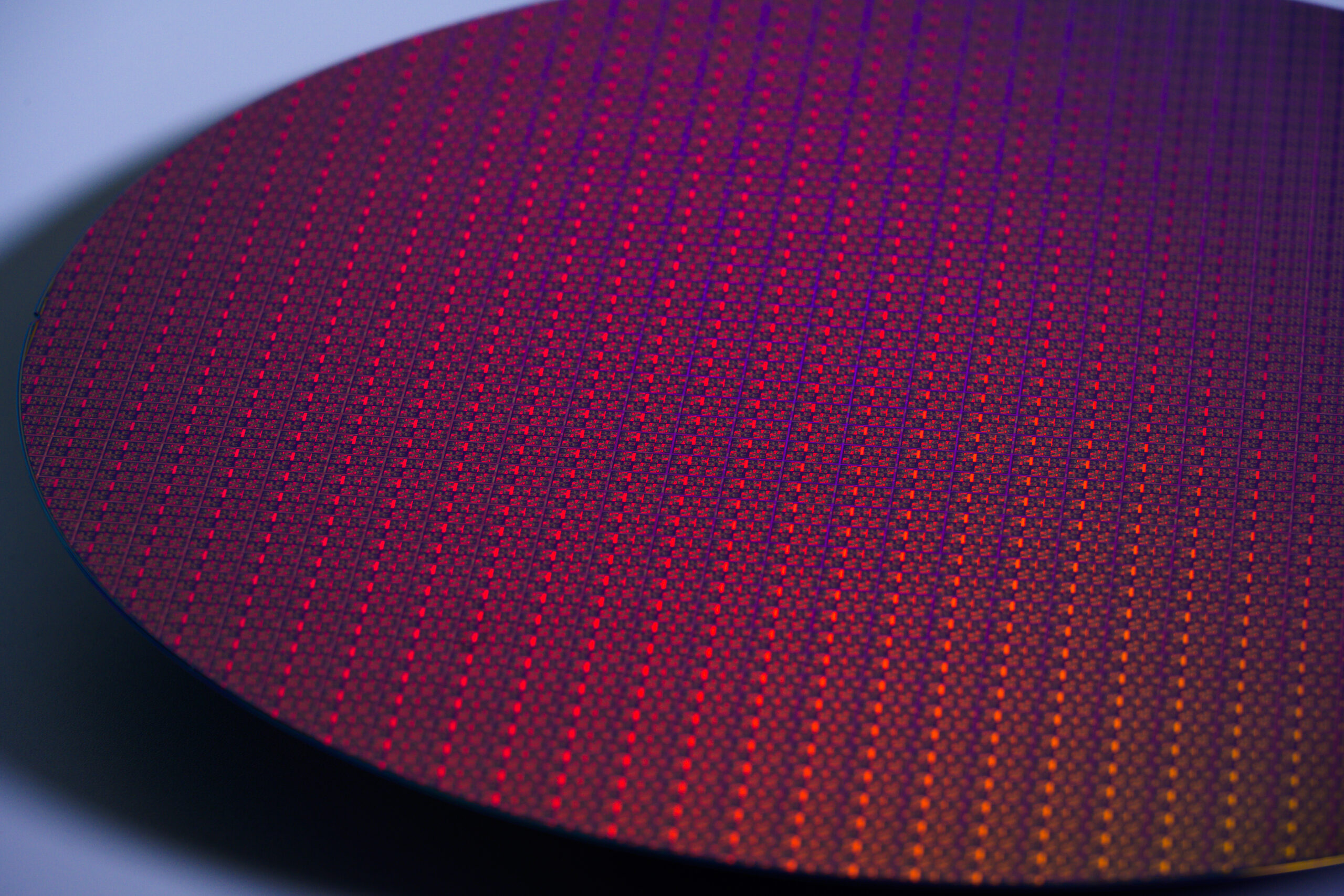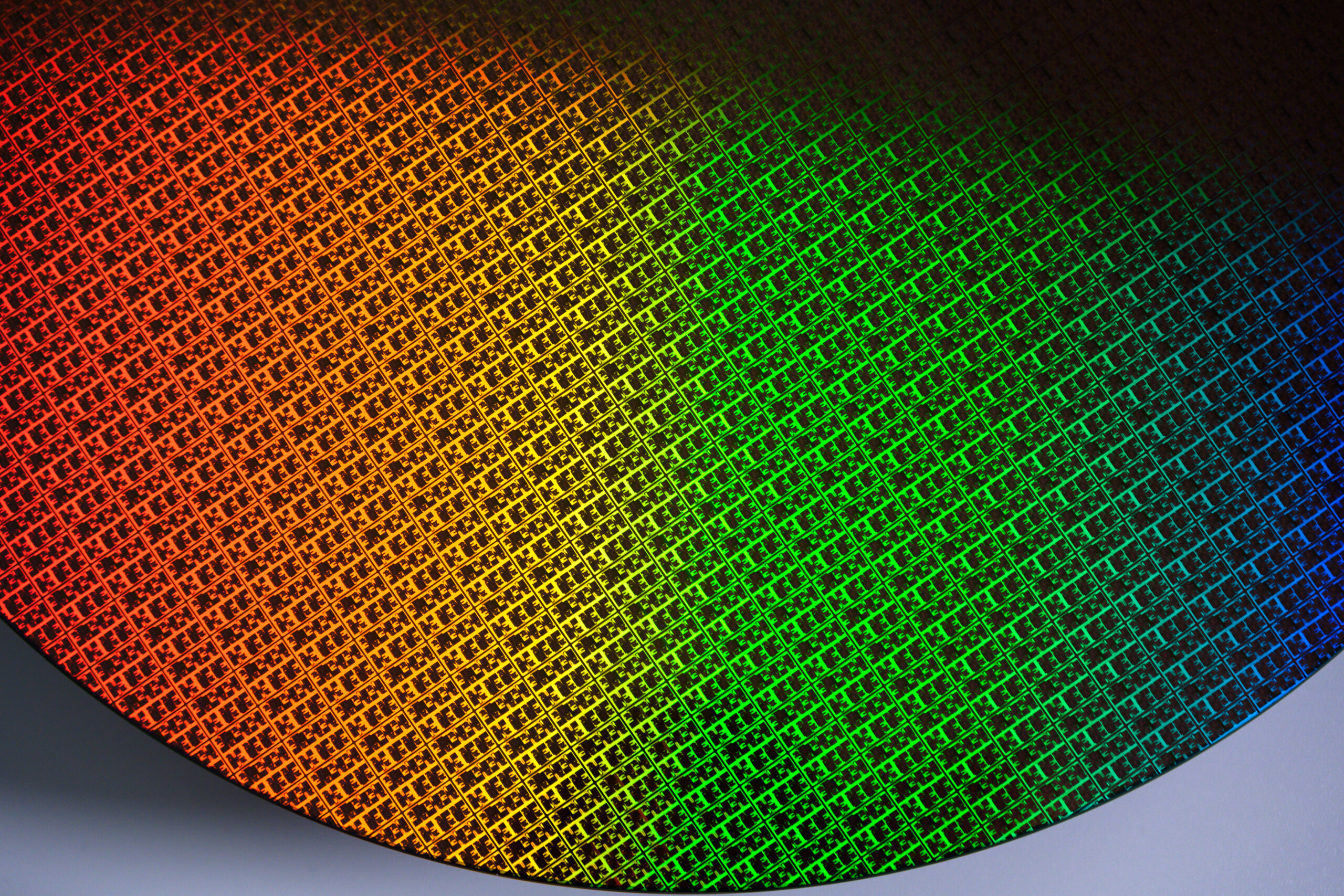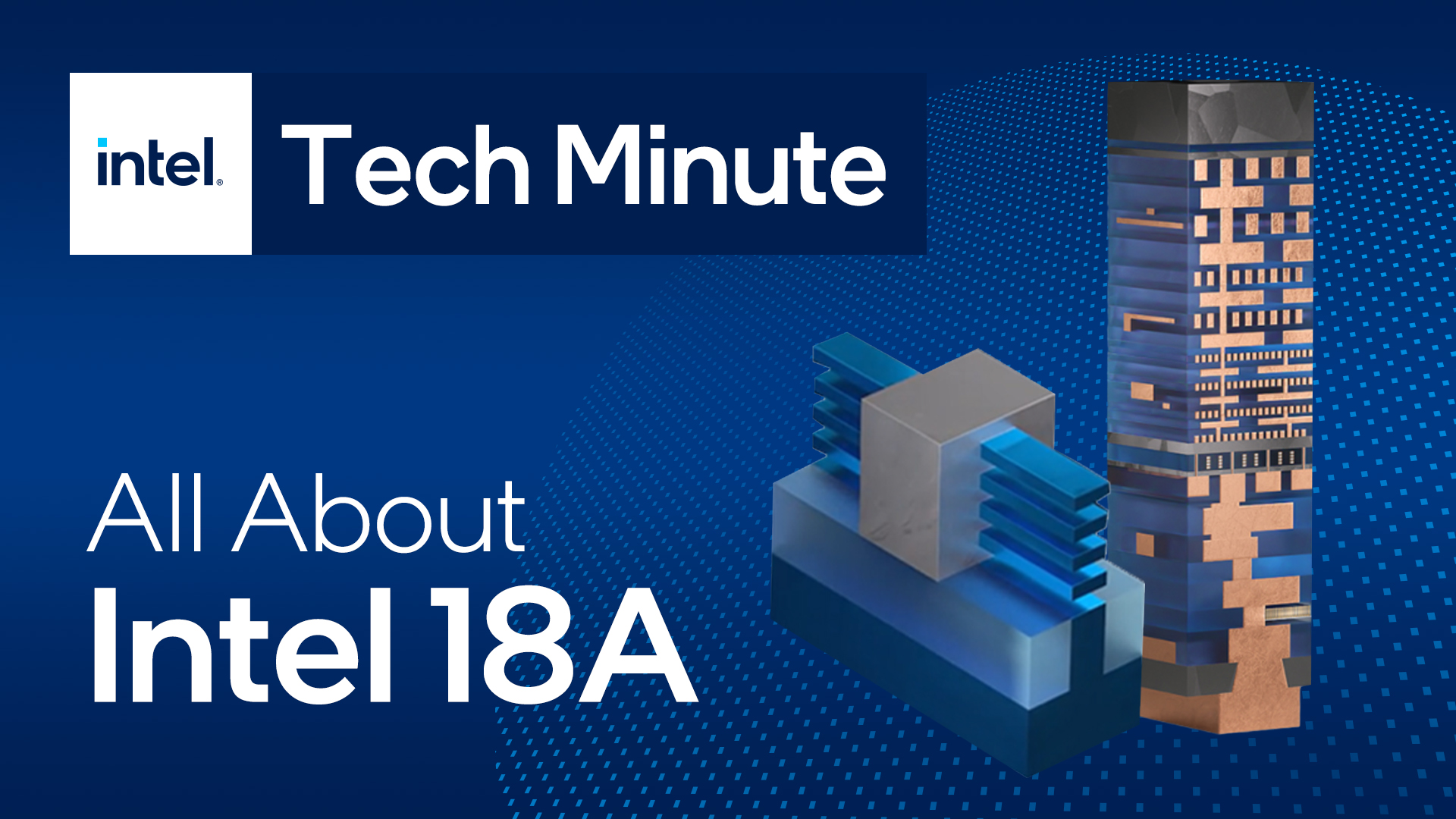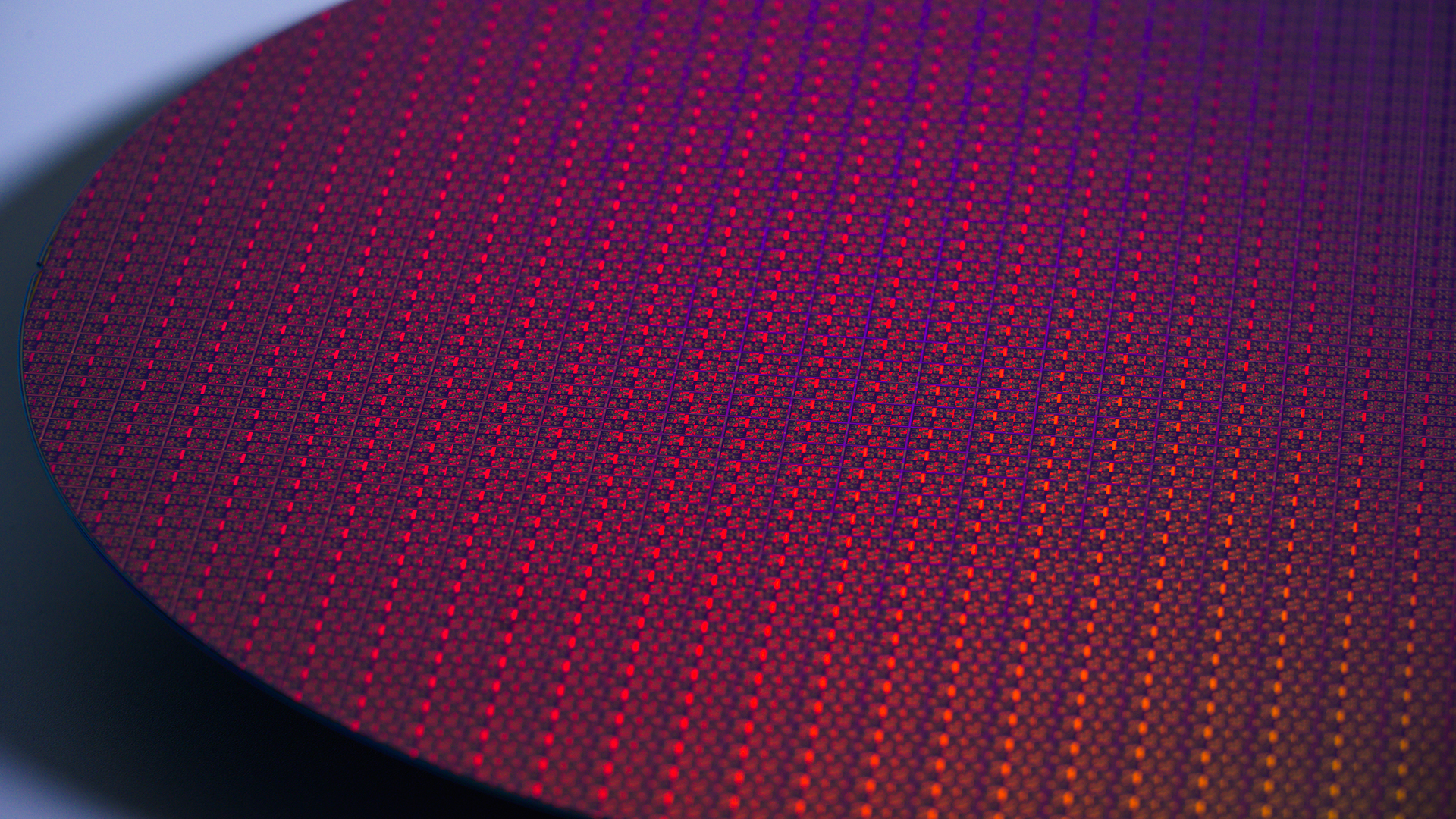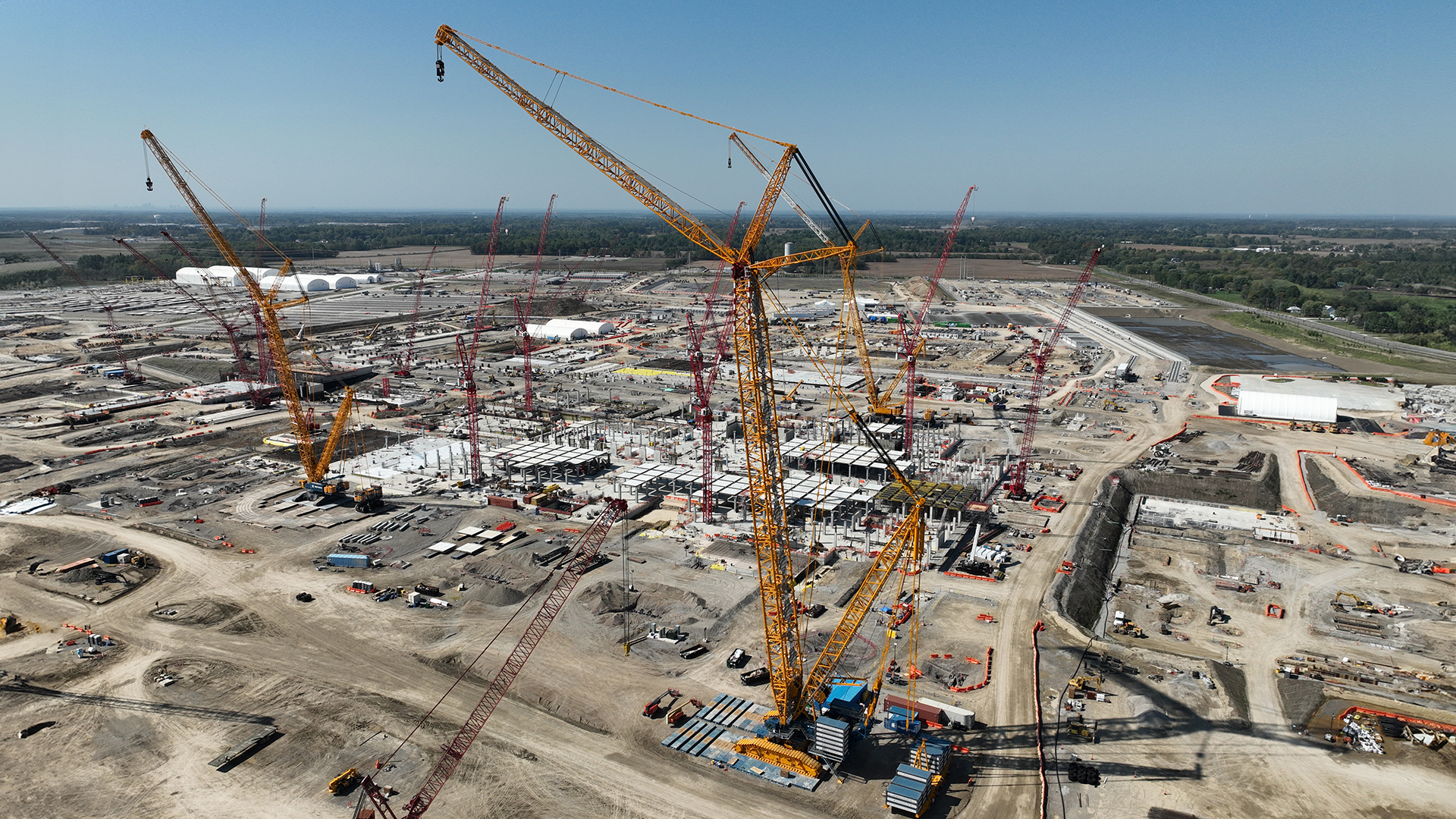Intel Foundry Achieves Major Milestones

Intel 18A, Intel Foundry's leading-edge process node, is on track for production in 2025. With RibbonFET and PowerVia, foundry customers will unlock greater processor scale and efficiency to drive the future of AI computing forward. (Credit: Intel Foundry)
Intel 18A powered on and healthy, on track for next-gen client and server chip production next year.
Download all images (ZIP, 32 MB)
What’s New: Intel today announced that its lead products on Intel 18A, Panther Lake (AI PC client processor) and Clearwater Forest (server processor), are out of the fab and have powered-on and booted operating systems. These milestones were achieved less than two quarters after tape-out, with both products on track to start production in 2025. The company also announced that the first external customer is expected to tape out on Intel 18A in the first half of next year.
“We are pioneering multiple systems foundry technologies for the AI era and delivering a full stack of innovation that’s essential to the next generation of products for Intel and our foundry customers. We are encouraged by our progress and are working closely with customers to bring Intel 18A to market in 2025.”
More on Intel 18A: In July, Intel released the 18A Process Design Kit (PDK) 1.0, design tools that enable foundry customers to harness the capabilities of RibbonFET gate-all-around transistor architecture and PowerVia backside power delivery in their designs on Intel 18A. Electronic design automation (EDA) and intellectual property (IP) partners are updating their offerings to enable customers to begin their final production designs.
Why It Matters: These milestones show Intel Foundry is the first to successfully implement both RibbonFET gate-all-around transistors and PowerVia backside power technology for foundry customers. Through ecosystem EDA and IP tools and process flows, RibbonFET and PowerVia are groundbreaking innovations that Intel Foundry makes available to all customers through Intel 18A. Working in concert with its resilient, more sustainable and trusted manufacturing capacity and supply chain, as well as the industry’s leading advanced packaging technology, Intel Foundry brings together all the components needed to design and manufacture next-generation AI solutions that scale and run more efficiently.
How It Works: In successfully booting operating systems without additional configurations or modifications, both Panther Lake and Clearwater Forest are clearly indicating the health of Intel 18A — the company’s leading-edge process technology that is expected to return Intel to process leadership in 2025. Other signs of health include Panther Lake DDR memory performance already running at target frequency. Next year's Clearwater Forest, the archetype of future CPU and AI chips, will mark the industry's first mass-produced, high-performance solution combining RibbonFET, PowerVia, and Foveros Direct 3D for higher density and power handling. Clearwater Forest is also the lead product for the Intel 3-T base-die technology. Leveraging Intel Foundry’s systems foundry approach, both products are expected to deliver significant improvements in performance per watt, transistor density and cell utilization.
How Customers are Involved: In gaining access to the Intel 18A PDK 1.0 last month, the company’s EDA and IP partners are updating their tools and design flows to enable external foundry customers to begin their Intel 18A chip designs. This is a critical enabling milestone for Intel’s foundry business.
“Cadence’s strategic collaboration with Intel Foundry helps accelerate our mutual customers’ innovation by providing access to industry-leading EDA solutions and IP optimized for Intel 18A,” said Tom Beckley, senior vice president and general manager, Custom IC & PCB Group at Cadence. “It is very encouraging to see Intel 18A achieve this critical milestone, and we are pleased to support customers on their leading-edge designs on 18A.”
Shankar Krishnamoorthy, general manager of the EDA Group at Synopsys, said, “It’s great to see Intel Foundry hitting these critical milestones. With 18A now customer-ready, Intel Foundry is bringing together the necessary components needed to design next-generation AI solutions that our mutual customers require and expect. Synopsys plays a mission-critical role as an on-ramp to the world’s foundries, and we are proud to work with Intel Foundry to enable Synopsys’ leading EDA and IP solutions for their leading-edge process.”
More About RibbonFET and PowerVia: These core Intel 18A technologies enable greater processor scale and efficiency, which is required to drive forward AI computing. RibbonFET allows for tight control over the electrical current in the transistor channel, enabling further miniaturization of chip components while reducing power leakage, a critical factor as chips become increasingly dense. PowerVia optimizes signal routing by separating power delivery from the front side of the wafer, thus reducing resistance and improving power efficiency. Together, these technologies demonstrate a powerful combination that could lead to substantial gains in computing performance and battery life in future electronic devices. Intel’s first-to-market position with both technologies is a win for foundry customers worldwide.
More Context: Read a full Q&A, “Kevin O’Buckley Talks Progress on Intel 18A,” on the Intel Newsroom.
Forward-Looking Statements
This news byte contains forward-looking statements that involve a number of risks and uncertainties. Words such as "accelerate", "achieve", "aim", "ambitions", "anticipate", "believe", "committed", "continue", "could", "designed", "estimate", "expect", "forecast", "future", "goals", "grow", "guidance", "intend", "likely", "may", "might", "milestones", "next generation", "objective", "on track", "opportunity", "outlook", "pending", "plan", "position", "possible", "potential", "predict", "progress", "ramp", "roadmap", "seek", "should", "strive", "targets", "to be", "upcoming", "will", "would", and variations of such words and similar expressions are intended to identify such forward-looking statements, which may include statements regarding:
- our business plans and strategy and anticipated benefits therefrom, including with respect to our IDM 2.0 strategy, Smart Capital strategy, partnerships with Apollo and Brookfield, internal foundry model, updated reporting structure, and AI strategy;
- projections of our future financial performance, including future revenue, gross margins, capital expenditures, and cash flows;
- projected costs and yield trends;
- future cash requirements, the availability, uses, sufficiency, and cost of capital resources, and sources of funding, including for future capital and R&D investments and for returns to stockholders, such as stock repurchases and dividends, and credit ratings expectations;
- future products, services, and technologies, and the expected goals, timeline, ramps, progress, availability, production, regulation, and benefits of such products, services, and technologies, including future process nodes and packaging technology, product roadmaps, schedules, future product architectures, expectations regarding process performance, per-watt parity, and metrics, and expectations regarding product and process leadership;
- investment plans and impacts of investment plans, including in the US and abroad;
- internal and external manufacturing plans, including future internal manufacturing volumes, manufacturing expansion plans and the financing therefor, and external foundry usage;
- future production capacity and product supply;
- supply expectations, including regarding constraints, limitations, pricing, and industry shortages;
- plans and goals related to Intel's foundry business, including with respect to anticipated customers, future manufacturing capacity and service, technology, and IP offerings;
- expected timing and impact of acquisitions, divestitures, and other significant transactions, including the sale of our NAND memory business;
- expected completion and impacts of restructuring activities and cost-saving or efficiency initiatives;
- future social and environmental performance goals, measures, strategies, and results;
- our anticipated growth, future market share, and trends in our businesses and operations;
- projected growth and trends in markets relevant to our businesses;
- anticipated trends and impacts related to industry component, substrate, and foundry capacity utilization, shortages, and constraints;
- expectations regarding government incentives;
- future technology trends and developments, such as AI;
- future macro environmental and economic conditions;
- geopolitical tensions and conflicts and their potential impact on our business;
- tax- and accounting-related expectations;
- expectations regarding our relationships with certain sanctioned parties; and
- other characterizations of future events or circumstances.
Such statements involve many risks and uncertainties that could cause our actual results to differ materially from those expressed or implied, including those associated with:
- the high level of competition and rapid technological change in our industry;
- the significant long-term and inherently risky investments we are making in R&D and manufacturing facilities that may not realize a favorable return;
- the complexities and uncertainties in developing and implementing new semiconductor products and manufacturing process technologies;
- our ability to time and scale our capital investments appropriately and successfully secure favorable alternative financing arrangements and government grants;
- implementing new business strategies and investing in new businesses and technologies;
- changes in demand for our products;
- macroeconomic conditions and geopolitical tensions and conflicts, including geopolitical and trade tensions between the US and China, the impacts of Russia's war on Ukraine, tensions and conflict affecting Israel and the Middle East, and rising tensions between mainland China and Taiwan;
- the evolving market for products with AI capabilities;
- our complex global supply chain, including from disruptions, delays, trade tensions and conflicts, or shortages;
- product defects, errata and other product issues, particularly as we develop next-generation products and implement next-generation manufacturing process technologies;
- potential security vulnerabilities in our products;
- increasing and evolving cybersecurity threats and privacy risks;
- IP risks including related litigation and regulatory proceedings;
- the need to attract, retain, and motivate key talent;
- strategic transactions and investments;
- sales-related risks, including customer concentration and the use of distributors and other third parties;
- our significantly reduced return of capital in recent years;
- our debt obligations and our ability to access sources of capital;
- complex and evolving laws and regulations across many jurisdictions;
- fluctuations in currency exchange rates;
- changes in our effective tax rate;
- catastrophic events;
- environmental, health, safety, and product regulations;
- our initiatives and new legal requirements with respect to corporate responsibility matters; and
- other risks and uncertainties described in this news byte, our 2023 Form 10-K, and our other filings with the SEC.
Given these risks and uncertainties, readers are cautioned not to place undue reliance on such forward-looking statements. Readers are urged to carefully review and consider the various disclosures made in this news byte and in other documents we file from time to time with the SEC that disclose risks and uncertainties that may affect our business.
Unless specifically indicated otherwise, the forward-looking statements in this news byte do not reflect the potential impact of any divestitures, mergers, acquisitions, or other business combinations that have not been completed as of the date of this filing. In addition, the forward-looking statements in this news byte are based on management's expectations as of the date of this news byte, unless an earlier date is specified, including expectations based on third-party information and projections that management believes to be reputable. We do not undertake, and expressly disclaim any duty, to update such statements, whether as a result of new information, new developments, or otherwise, except to the extent that disclosure may be required by law.
